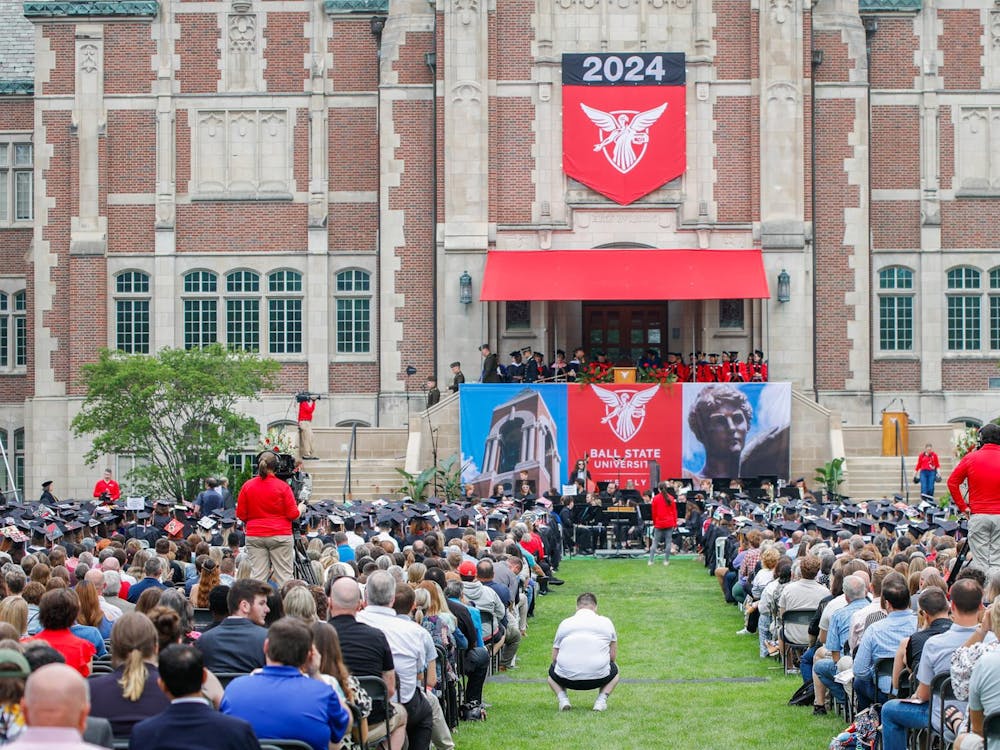Robby General is a junior journalism and telecommunications major and writes "Generally Speaking" for the Daily News. His views do not necessarily agree with those of the newspaper. Write to Robby at rjgeneral@bsu.edu.
Mid-major schools participating within the Football Bowl Subdivision are in a financial arms race with Power 5 schools — and they’re losing.
Universities in conferences like the Mid-American Conference are being forced to find and save money wherever they can just to keep their athletic departments afloat, resulting in less-popular programs getting cut.
Earlier this week, the University of Buffalo made a “very difficult decision” according to the university’s president Satish K. Tripathi — opting to drop its baseball, men’s soccer, men’s swimming and diving and women’s rowing programs. The school is honoring the scholarships promised to the 90 athletes in the programs being cut, but the athletics department will save $2 million following those students' graduation.
 |
|---|
Buffalo isn’t the only school that’s been forced into a decision like this. In the summer of 2015, amid other cuts, the University of Akron eliminated its baseball program to save $700,000 a year.
RELATED: Kevin Marnon finds new home at Ball State after Akron baseball disbands.
This trend of schools cutting programs doesn’t appear to be stopping any time soon. So is it worth it?
Decisions like cutting programs or subsidizing millions of dollars through student service fees are made to keep athletic departments participating at the highest level of intercollegiate athletics. But at the end of the day, there’s one culprit behind the money issues that mid-major programs face — the football team.
“I think the one problem with a school like Buffalo is, like most schools, they’ve made an investment at the college into their football program,” said David Ridpath, an associate professor at Ohio University.
This decision is made across mid-major institutions because of the false perception that the sport will bring in revenue for the institution.
“It’s really not, and then you start really seeing financial issues, especially at mid-major schools, usually what happens is the sports get dropped,” Ridpath said. “I think also from Buffalo’s perspective is, being in a conference like the MAC, most schools are only supporting 16 sports and having sports like rowing and other things tend to probably be points of diminishing returns as they are trying to make football as big as they can.”
These program cuts are something that Ridpath says will continue, and I tend to agree.
Until mid-major FBS schools realize football is not worth the cost, smaller athletic programs will continue to be cut at schools across the country.
According to an ESPN database, Buffalo’s $2 million cut comes from a $31 million-plus athletic budget, and $24 million of which coming from subsidies — student service fees, contributions and the university and conference net revenue.
And while its fiscal decision to cut four sports seems like a solution, it’s only temporary.
Every year, mid-major schools are spending more and more on football because of the appearance of being an “elite team” by playing in the FBS.
But does having the false appearance of being “elite” mean more to a university than actually playing at a level where it can compete? That’s where schools like Ball State, whose nearly $23 million athletic budget included more than $17 million in subsidies, and other mid-major programs need to make a more drastic decision, like the University of Idaho, which is abandoning the FBS to play in the Football Championship Series beginning in 2018.
RELATED: Mid-major programs choose between FBS exposure, FCS competition
"My guess is that in the MAC, there’s going to be a few schools that might tail off on their own,” Ridpath said. ”But maybe, five or ten years down the road there could be a full conference like the Sun Belt or others that might say ‘You know what, we just can’t do this anymore. ... We need to change our way of thinking.
“But we have to be able to show that it’s not going to damage the institution, that’s where I think Idaho is a good template to keep an eye on.”
This problem isn’t just faced by mid-major schools, however. Out of the 128 schools who compete in the FBS, only 24 of their athletic departments actually make a profit.
So, what can be done? There are a few routes that schools trying keep its athletic programs as much out of the red as possible can take.
1. Move from the FBS to the FCS.
I know it’s not a popular decision, but it’s the one that makes the most sense.
It’s been proven that MAC schools as a whole struggle to compete with the best teams in the nation. Although several schools have come up victorious, larger institutions will pay upwards of a millions dollars for an easy win, so why keep trying?
If the MAC as a conference moved down to the FCS, which would still keep other popular sports like basketball at the Division-I level, teams would be more competitive and might even bring a competitive football culture back to a Midwestern conference which is overshadowed by Big Ten schools like Indiana, Ohio State and Michigan.
As a whole, FBS attendance numbers fell for the sixth straight year this year, and 2015 attendance numbers dropped by an average of 670 people per games, according to an NCAA report.
And at the bottom of that list in attendance numbers? The MAC.
Four out of 6 of the lowest attended teams from last season came from the MAC. These schools are Ball State (128), Akron (125), Kent State (124) and Northern Illinois (123).
RELATED: Empty Nest: Ball State working to increase attendance at football games
“There is a lot of wisdom I think in just playing at a level that you think you can play at,” Ridpath said. “I think that it would be very exciting in Muncie if they were playing in the FCS playoffs. I think it would be much more exciting than what you’re watching now. Or even another division, I think that the Power 5 is just so far gone.”
But while FBS schools, particularly mid-major programs, attendance continues to drop, FCS programs are gaining more and more of a fan base, with their attendance numbers rising by an average of 211 per game.
This decision would have to be a MAC-wide one, due to the current layout of the conference's rules.
2. Change MAC rules.
The MAC requires each member to sponsor football, men’s and women’s basketball and women’s volleyball.
This means, in order to be a full-time school in the conference, each of the 12 MAC programs must continue to have each one of the above sports.
But, what if that wasn’t the case?
If the MAC changed the requirement to sponsor these programs, schools may begin looking into dropping football, which means they have the option to save millions of dollars a year by opting out of football and focusing on competing in other sports.
“What’s wrong with other schools competing in all the other sports?” Ridpath said. “What if they just decide, ‘hey we can’t support football anymore, but we want to focus on all of the other sports.’”
This decision wouldn’t force each one of the MAC schools to drop football, leaving those who chose to keep playing that option, it would just provide a different route for those whose athletic budget belts simply can’t get any tighter.
3. Change NCAA rules.
In order to compete at the highest level of college football, the FBS, each academic institution is required to sponsor 16 different athletic programs.
After the team cuts, Buffalo is down to that minimum, joining the company of Ohio, Toledo and Western Michigan. The rest of the MAC schools are anywhere between 17 and 21 athletic teams, leaving them some room to cut more programs and remain in the FBS is desired.
This isn’t a popular decision and only a temporary fix, but if the sport minimums were to be lowered — Division-I schools that don't sponsor FBS programs are only required to have 14 teams — schools might look into cutting different sports in order to save money.
“Down the road, like sports minimums and all those other things that are in the bylaws now, I could see those changing, where, if you’re allowed to have 14 sports, people will be drop sports like wrestling, gymnastics and swimming, just to keep football and basketball going,” Ridpath said.
But that rule change might take some time in order to make exceptions for the entire NCAA, so schools who need a fix now will be forced to make more drastic decisions, like cutting other programs.





